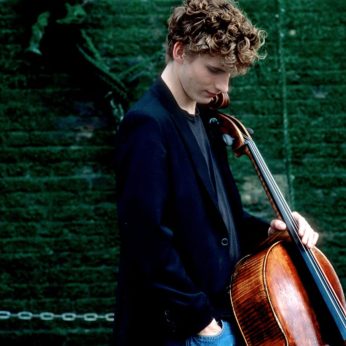Composer: Robert Schumann (b. 1810 - d. 1856)
Performance date: 02/07/2014
Venue: Bantry Library
Composition Year: 1847
Duration: 00:31:08
Recording Engineer: Richard McCullough, RTE
Instrumentation Category:Piano Trio
Artists:
Gergana Gergova -
[violin]
Andreas Brantelid -
[cello]
Cédric Tiberghien -
[piano]

Schumann wrote his two piano trios in a
flurry of creative activity in 1847. As with his first two string quartets,
they were conceived as a unit. They were also clearly composed as a response to
Clara’s Piano Trio in G minor of the previous year. In nineteenth century
performances, Clara’s Trio was often paired with her husband’s D minor
Trio.
I used to write most, practically all of my
shorter pieces in the heat of inspiration; many compositions were completed
with unbelievable swiftness, for instance, my First Symphony was written in
four days, as was a Liederkreis of twenty pieces [Dichterliebe]. Only from the
year 1845 on, when I began to invent and work out everything in my head, did a
completely new manner of composing begin to develop.
Schumann wrote this in July 1846. Although
he was, strictly speaking, writing about the compositional process, it did in
fact lead to a change of style, rather portentously styled his
direction had been begun in 1845, when he spent most of that year studying
fugues and writing compositions in strict contrapuntal form, an activity he
described as Fugenpassion. He spent
the year 1846 writing his Second Symphony, when he was not struggling with
ill-health. He was heartened by the positive critical response to the new path
he was following and quickly set to work on the D minor Trio.
This is a turbulent and passionate work,
built on a substantial scale. Both outer movements have an almost symphonic
sweep and the dark beginning sets the mood immediately. The first subject is
created out of the opening statement, more of a short phrase than a
fully-fledged theme. A dotted motif signals the arrival of the second group,
which is treated imitatively amongst the instruments. The closing group
combines a lyrical variant of the second theme with the movement’s opening
idea. The exposition is repeated and early in the development there is an
extraordinary interruption, a quiet, shimmering sul ponticello passage, whose visionary quality seems at odds with
the urgency of the rest of the movement. A similar moment of repose, hastily
denied, can be found in the coda.
The thematic economy of the first movement
is taken up with the nervous, dotted theme in the Scherzo, which dominates the
main section; it is then smoothed in the middle section into something more
graceful. This economy could be described as the strategy developed by a mature
composer to conserve his melodic invention, which in his youth was spent with
carefree abandon. The slow movement is one of Schumann’s most deeply-felt
creations, although his fantasy is carefully controlled. Tenderness is not
easily expressed, but this movement achieves this effortlessly. The finale
follows without a break and initially appears to take a much lighter tone. The
drone-like accompaniment to the first theme gives it a pastoral flavour, while
the second theme is a bittersweet invention that bears the unmistakable stamp
of Schumann. But neither theme gives a hint of the contrapuntal rigours of the
development, where portions of the first theme are treated in fugato. Gradually the instruction Mit feuer takes effect and Schumann
drives the work to a massive and powerful conclusion.
Copyright © 2025 West Cork Music. All rights reserved.
Designed and developed by Matrix Internet